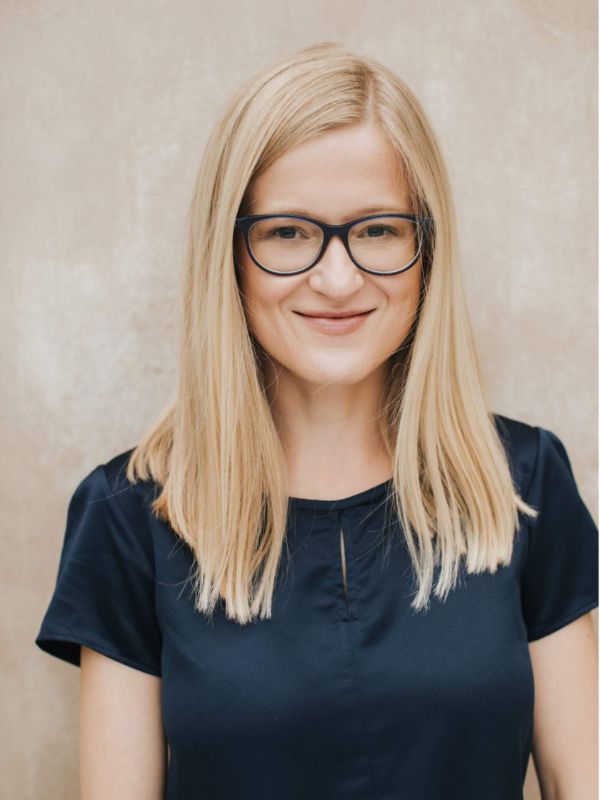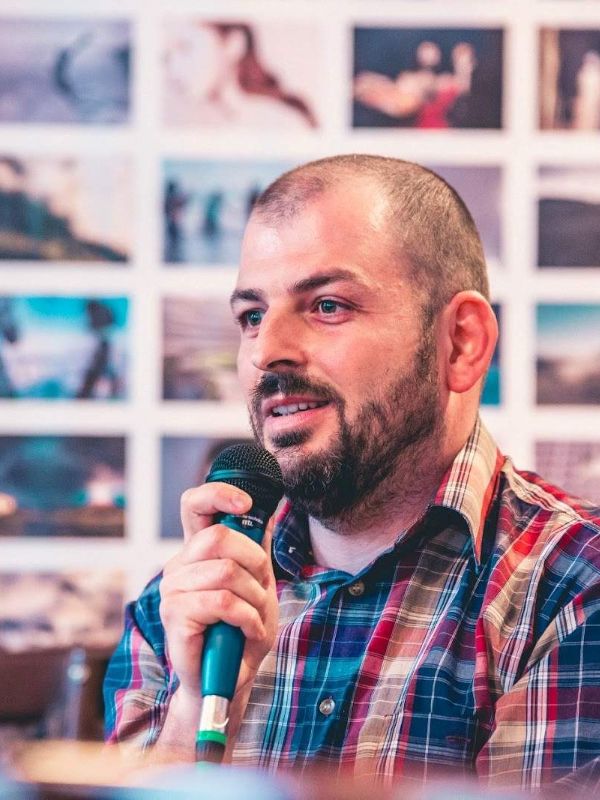
Welcome to your online course Designing Journalistic Content with the Reader in Mind Part 2! This is a follow up to Part 1 of the lesson about learning how to use design thinking to create insightful, meaningful content that is easy to digest for the consumers – readers and listeners.
This course will introduce you to the design thinking method led by design thinking facilitator Jowita Radzińska. The main idea of putting the reader at the center is to start with actual needs and answer them by creating adequate content. The course will introduce you to the design thinking methodology through five steps, focusing on empathy, several interactive exercises, short examples and additional resources.
You will also be able to examine creativity myths and check whether an adequate diagnosis is better than guesswork. The practical part is based on results from the research study entitled “Uncertain times: The transmission of information and views on the war in Ukraine conducted within the SCIENCE+ project of Free Press Eastern Europe.”

Welcome to your online course Designing Journalistic Content with the Reader in Mind Part 1! Learn how to use design thinking to create insightful, meaningful content that is easy to digest for the consumers – readers and listeners.
This course will introduce you to the design thinking method led by design thinking facilitator Jowita Radzińska. The main idea of putting the reader at the center is to start with actual needs and answer them by creating adequate content. The course will introduce you to the design thinking methodology through five steps, focusing on empathy, several interactive exercises, short examples and additional resources.
You will also be able to examine creativity myths and check whether an adequate diagnosis is better than guesswork. The practical part is based on results from the research study entitled “Uncertain times: the transmission of information and views on the war in Ukraine conducted within the SCIENCE+ project of Free Press Eastern Europe.”

Welcome to the Transitions mini-course on building trust with new and hard-to-reach audiences! In this 30-minute mini-course, you will be introduced to a few ideas, tips, and tricks on how to do reporting in a deeply divided and distrustful community, how to build trust with your readers, and how to reach out to audiences that are not regular consumers of quality media.
The course is led by Zoltán Sipos, the editor-in-chief of Átlátszó Erdély, an investigative outlet covering the 1,2 million Hungarian minority community living in Romania. This lesson consists of a short explanation video, step-by-step instructions on how to report and how to build trust, and interactive exercises to test your newly acquired skills. By the end of this course, you will be able to:
- Know the specific problems your audience/community faces;
- Know how to tailor your content in a way that meets the needs of your community;
- Find topics/story ideas that bring people together;
- Gain skills to report in a community that doesn’t trust media;
- Interpret feedback to know whether you are on the right track.

Welcome to your online course on Complicating the Narratives! Learn how to report on controversial and polarising topics without further dividing society. This is the second part of a two-part course series on ‘Complicating the Narratives’ and its four-pillar approach, where we will focus on the third pillar ’embracing complexity’ and the fourth pillar ‘countering confirmation bias’. The first course will dive deeper into the first and second pillars: ‘listening differently’ and ‘going beneath the problem’. Be sure to check it out!
This course is led by journalist Anneleen Ophoff, aided by resources from the Solutions Journalism Network and with a special thanks to Nina Fasciaux. The course will introduce you to the methodology through 2 lessons, several interactive exercises, short examples and step-by-step instructions. Sign off with links to additional resources you can use throughout your career. By the end of this course, you will be able to:
- Frame and cover stories from a lens that embraces complexity and provides context
- Counter existing confirmation bias in the audience and ourselves

Hello and welcome to the second part of the Basics and Elements of Data Journalism course! During this course you will learn how to put together a data-driven story, from finding the data to presenting the results. For this aim, you will learn about the main data sources, methods for obtaining, processing and analysing data, and how to present data graphically.

Welcome to the Basics and Elements of Data Journalism course! During this course you will learn how to put together a data-driven story, from finding the data to presenting the results. For this aim, you will learn about the main data sources, methods for obtaining, processing and analysing data, and how to present data graphically.

In this 30-minute mini-course, you will learn how journalists can become news literacy educators in a step-by-step guide.
By the end of this exercise/course, you will be able to:
1) Understand the basic effective concept of media literacy from the reader´s perspective
2) Cover the stories related to disinformation and “fake news” in a way that also increase the media literacy of your readers





